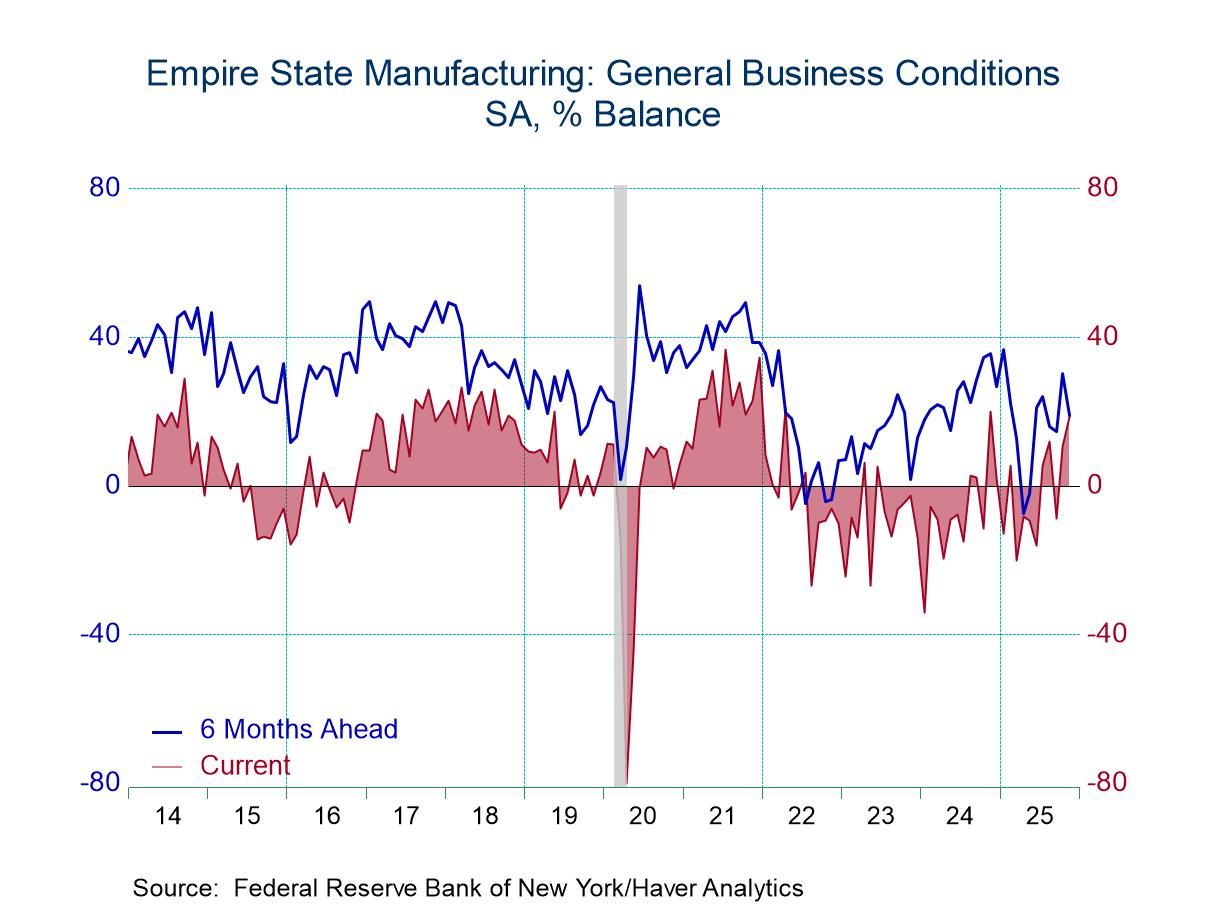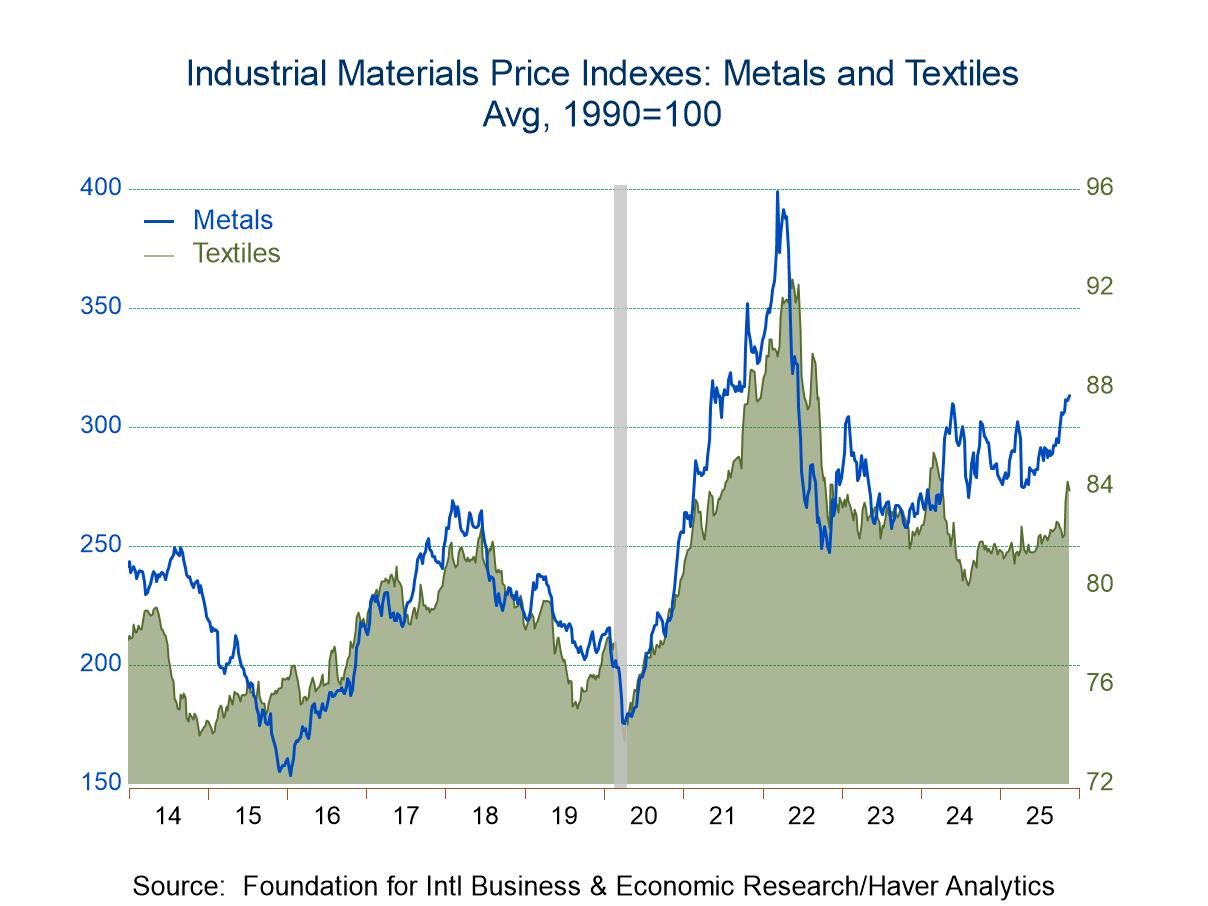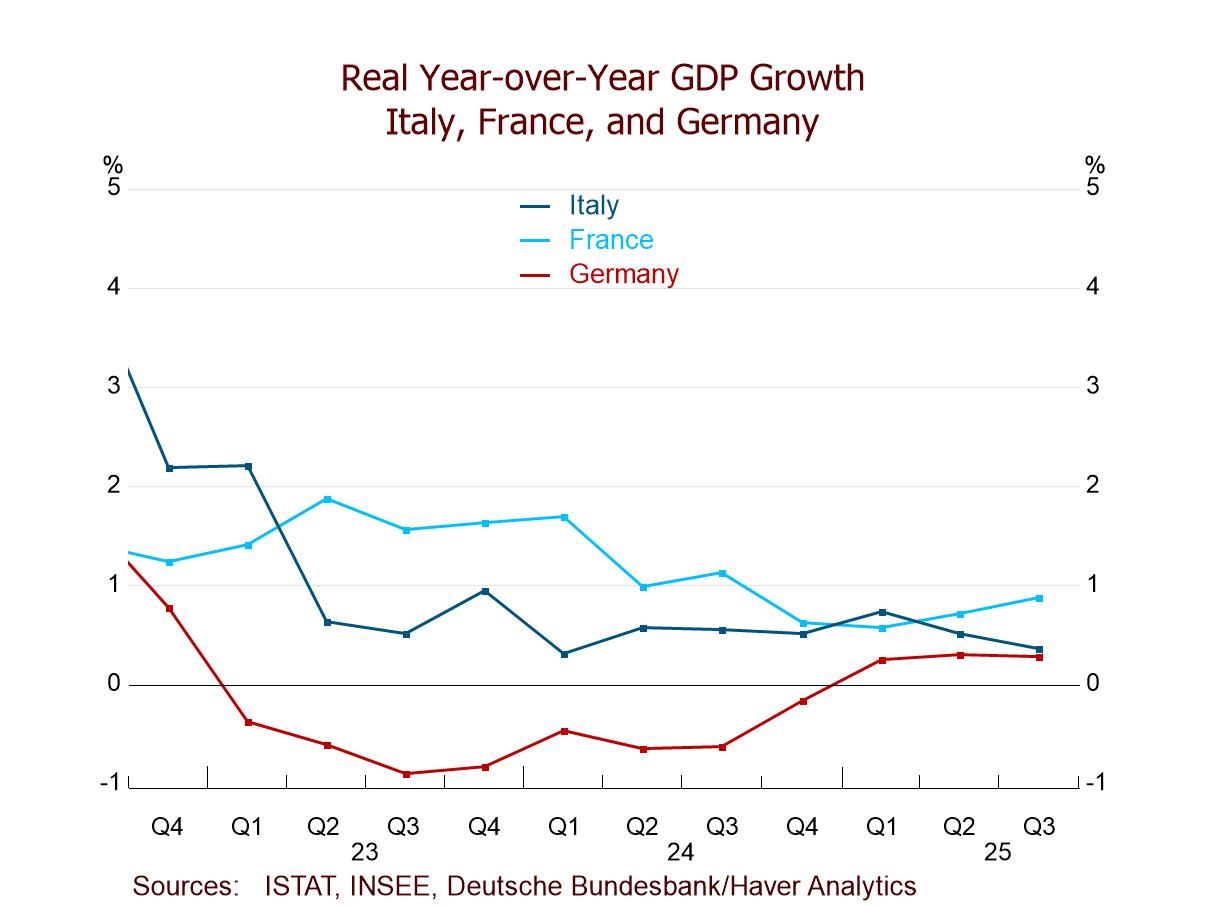U.S. Consumer Credit Growth Slows During September
by:Tom Moeller
|in:Economy in Brief
Summary
- Revolving credit growth halves.
- Nonrevolving credit usage improves.


Consumer credit grew $25.0 billion (7.9% y/y) during September following a $30.2 billion August increase, revised from $32.2 billion. A $30 billion gain had been expected in the Action Economics Forecast Survey. The ratio of consumer credit outstanding to disposable personal income held steady at 25.0% in September, remaining the highest since March 2020.
Revolving consumer credit balances grew $8.3 billion (15.1% y/y) after increasing a little-revised $17.1 billion in August. Revolving credit provided by depository institutions (91.0% of the total and mostly credit card debt) advanced 16.8% y/y, roughly the quickest growth since November 1996. Borrowing from credit unions (6.3% of the total) increased 14.0% y/y, up from 0.9% y/y twelve months earlier. Nonfinancial business loans (1.7% of the total) were unchanged y/y in September. The value of finance company loans (1.1% of loans) fell 20.0% y/y in September.
Nonrevolving consumer credit balances rose $16.6 billion (5.8% y/y) after increasing $13.0 billion in August, revised from $15.1 billion. Federal government lending, which issued 41.7% of nonrevolving credit, rose 3.3% y/y, about the same rate as in August. Nonrevolving loans provided by depository institutions (26.3% of credit) grew 7.8% y/y, the least in twelve months and down from 10.5% y/y in April. Finance company lending (15.7% of loans) declined 0.6% y/y after increasing 8.7% y/y as of April 2021. Growth of credit union nonrevolving loans (15.3% of the total) accelerated to 17.9% y/y in September, the quickest growth since December 2015 and up from 1.8% y/y in April 2020.
The value of student loans outstanding rose 1.7% y/y to $1.769 trillion in Q3'22. The value of motor vehicle loans outstanding rose 7.4% y/y to $1.397 trillion.
These Federal Reserve Board figures are break-adjusted and calculated by Haver Analytics. The breaks in the series in 2005, 2010 and 2015 are the result of the incorporation of the Census and Survey of Finance Companies, as well as changes in the seasonal adjustment methodology. The consumer credit data are available in Haver's USECON database. The Action Economics figures are contained in the AS1REPNA database.


Tom Moeller
AuthorMore in Author Profile »Prior to joining Haver Analytics in 2000, Mr. Moeller worked as the Economist at Chancellor Capital Management from 1985 to 1999. There, he developed comprehensive economic forecasts and interpreted economic data for equity and fixed income portfolio managers. Also at Chancellor, Mr. Moeller worked as an equity analyst and was responsible for researching and rating companies in the economically sensitive automobile and housing industries for investment in Chancellor’s equity portfolio. Prior to joining Chancellor, Mr. Moeller was an Economist at Citibank from 1979 to 1984. He also analyzed pricing behavior in the metals industry for the Council on Wage and Price Stability in Washington, D.C. In 1999, Mr. Moeller received the award for most accurate forecast from the Forecasters' Club of New York. From 1990 to 1992 he was President of the New York Association for Business Economists. Mr. Moeller earned an M.B.A. in Finance from Fordham University, where he graduated in 1987. He holds a Bachelor of Arts in Economics from George Washington University.







 Global
Global